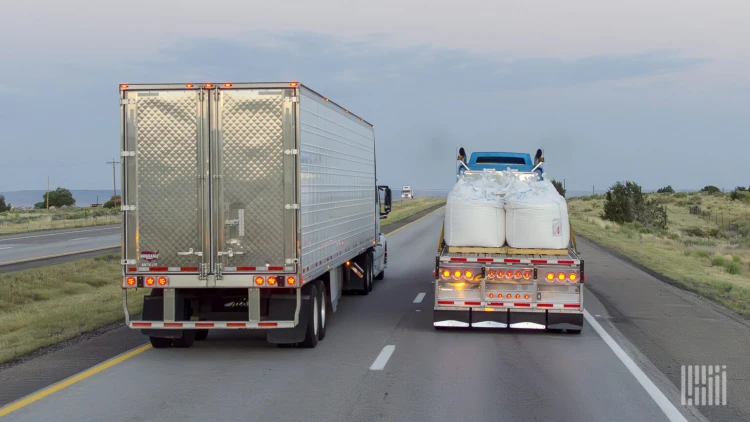Shipping organisations set out to tackle rising number of containers lost overboard
Tuesday, 02 August 2022

Following a spike in containers lost at sea, the World Shipping Council (WSC), the global liner association, has initiated a study to see how this scourge can be prevented.
The WSC’s Containers Lost at Sea Report covering 2020-2021 shows that containers lost overboard represent less than one thousandth of 1% (0.001%). However, the past two years have seen a worrying break in the downward trend for losses, with the average number of containers lost at sea per year since the start of the survey increasing by 18% to 1,629.
The winter of 2020-21 saw an unusually high number of weather-related incidents, and the average losses for the two-year period 2020-2021 were 3,113 compared to 779 in the previous period with the most high profile event being the ONE Apus vessel, whose battered image (pictured) on returning to port in Japan made headlines around the world.
WSC’s new project will run over three years and will use scientific analyses, studies, and desktop as well as real-life measurements and data collection to develop and publish specific, actionable recommendations to reduce the risk of containers lost overboard.
Initial results from the study show that parametric rolling in following seas is especially hazardous for container vessels, a phenomenon that is not well known and can develop unexpectedly with severe consequences. To help in preventing further incidents a notice to mariners has been developed, describing how container vessel crew and operational staff can plan, recognize and act to prevent parametric rolling in following seas. Many more topics, tests and measurements will be undertaken by the project, which will continue reporting on progress and sharing insights on a regular basis through the IMO and other forums.
“Container vessels are designed to transport containers safely and carriers operate with tight safety procedures, but when we see numbers going the wrong way, we need to make every effort to find out why and further increase safety. The liner shipping industry’s goal remains to keep the loss of containers as close to zero as possible. We will continue to explore and implement measures to make that happen and welcome continued cooperation from governments and other stakeholders to accomplish this goal,” said John Butler, president of the WSC.
MORE NEWS : Qatar Cargo provides future freighter insights
In addition to the project, WSC and member companies have actively contributed to and supported revision of the International Maritime Organization’s (IMO) guidelines for the inspection programs for cargo transport units. WSC also supports the creation of a mandatory reporting framework for all containers lost at sea – an issue that will be on IMO’s agenda in September.
Also looking at the issue of boxship rolling has been Norwegian class society, DNV, which has just launched an app to help shipmasters avoid this situation altogether.
“There are two types of dangerous roll events: synchronous and parametric rolling. Both result from highly complex interactions of several factors and are hard to predict. By the time you notice them it is often too late to take remedial action,” commented Arne Schulz-Heimbeck, senior principal engineer and programme development manager for containerships at DNV.
Synchronous rolling happens when the wave direction is approximately perpendicular to the direction of travel, the ship’s natural roll frequency is close to the wave frequency, and the metacentric height, which indicates the ship’s initial static stability, is relatively high. The angle of heel can quickly increase to as much as 30 degrees. The effect is aggravated significantly in shallow water, typically in continental shelf regions where the waves are shorter and steeper. This increases the risk of synchronous rolling disproportionally when the wave period is similar to the ship’s roll frequency.
In contrast to synchronous rolling, parametric rolling is induced by waves moving approximately in parallel with the direction of travel, either following or contrary to its heading. A relatively low metacentric height increases the risk of parametric rolling. When the wave frequency approximates the ship’s natural roll frequency, parametric resonance can cause excessive rolling. As head, following or quarterly waves run along the ship, the waterplane area changes, and with it the righting lever curve whose periodical changes can cause the ship to roll heavily.
In either case, the roll angle can rise steeply and reach dangerous levels within minutes. By the time the shipmaster realises that an excessive roll event is occurring, there may be just minutes left to take action. Without fully understanding what is going on, shipmasters may simply not know what to do in such a situation, or even act in the wrong way, for example by reducing the ship speed instead of increasing it, which can be remedial in particular situations.
DNV has accumulated substantial expertise in the field of parametric and synchronous rolling over decades and developed direct stability assessment and ship-specific operational guidance based on non-linear numerical simulations of ship motion in waves. DNV’s hydrodynamic computation method for seakeeping and two complementary simulation methods validated over 15 years provide a basis for predicting resonant roll events.
The Anti-Roll Assist app bases its calculations on the results of complex simulations performed by DNV on a powerful computer. The app relies on DNV’s hydrodynamic simulations based on the individual ship’s hull form.
“Our new Anti-Roll Assist app draws a clear picture of the risk situation so a captain knows immediately what can be done to avoid losing containers due to excessive rolling,” said Schulz-Heimbeck.

01 September 2024
Container Prices Double, Leasing Rates Triple in China

04 September 2024
Maersk sets new bar with shipping’s first climate target validation

06 September 2024
Port of Los Angeles Reports Another Busy Month for Cargo Volumes

09 August 2024
